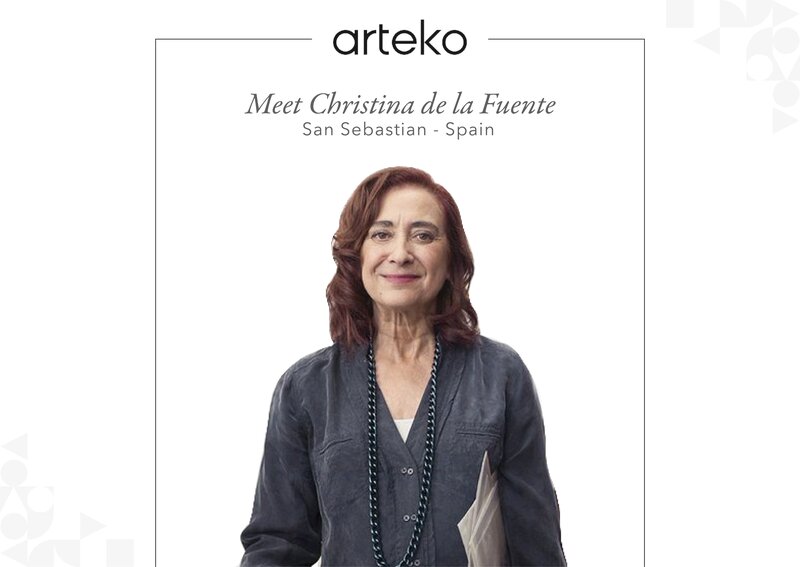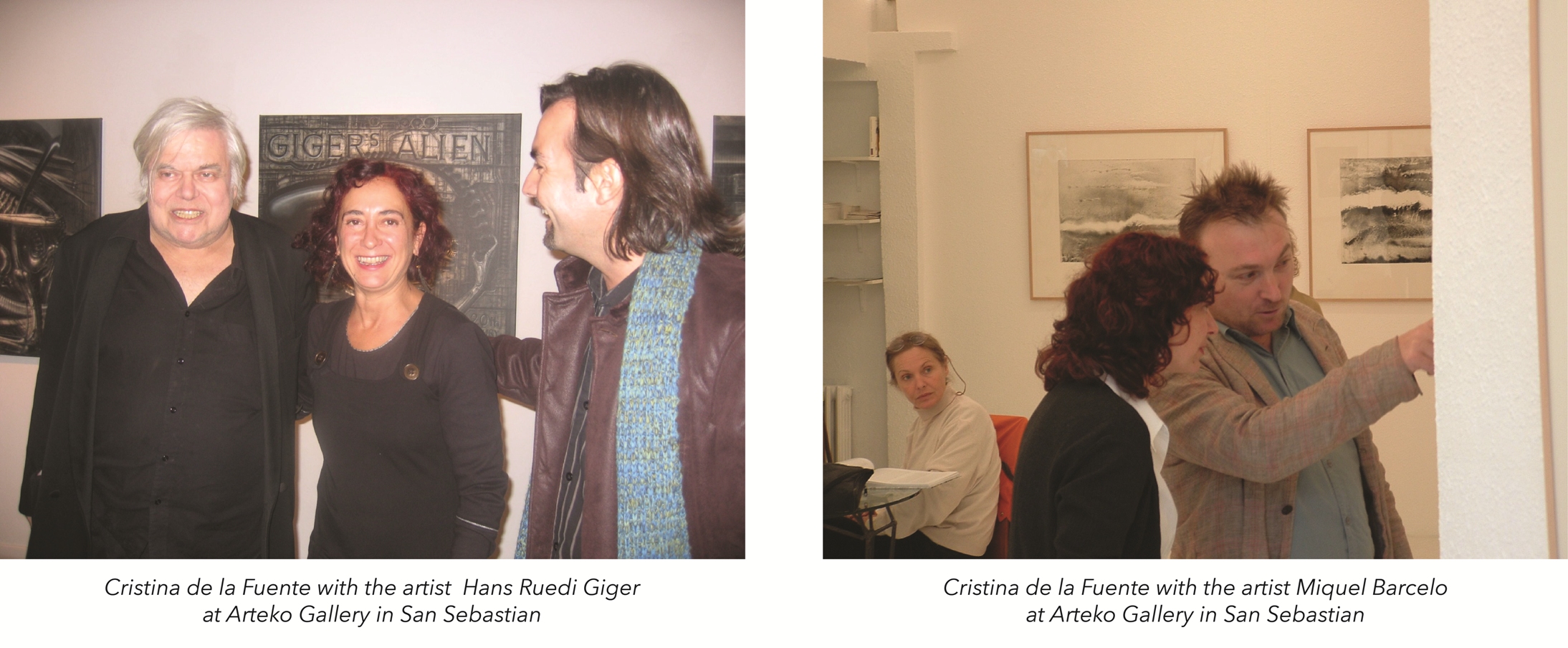We use cookies to make your experience better. To comply with the new e-Privacy directive, we need to ask for your consent to set the cookies. Learn more.

- 01/20/2023
Muse Square: Can you present Arteko gallery to your peers?
Cristina de la Fuente: We opened Arteko gallery in June of 1996. Our gallery started with the “works on paper” medium. Our source of inspiration was the artists working naturally and spontaneously on sketches and drawings made on paper. Additionally, works on paper are affordable and hence more accessible to new art collectors. For us this was an opportunity to bring art closer to the public by proposing limited prints and editions at reasonable prices, giving new opportunities for art collectors.

We are very fond of artist’s books; we have done many exhibitions with artist’s books because it condenses the universe of creators, and is a very intimate medium.
Muse Square: Lately, you decided to work with digital art? Does that decision respond to the same logic of bringing art closer to the public, but with new generations? What is the logic behind that decision?
Cristina de la Fuente: Well, the logic is that the gallery was really born specializing in works on paper. But when we relocated the gallery to a larger space, and we started working with a wider range of mediums.
I think that galleries should support and keep track of everything that is currently happening in the Art industry. Artists are always ahead of their time, and we found it very interesting, of course, to follow their path.
In 2006, ten years after we founded Arteko, we added new mediums such as: performance, photography, painting, and digital art. We started working with the artist Jaime de los Ríos, a poet of new technologies specializing in abstract painting.
Muse Square: Can you tell us the story of your gallery through its most important milestones?
Cristina de la Fuente: In June of 1996, we inaugurated Arteko gallery with an exhibition of the Japanese artist Nori Ushijima, who lives between Japan and Europe and worked many years in San Sebastian. He is an excellent artist who works on paper and canvas. He also lived many years in Italy, where he learned ancient techniques such as fresco and tempera.
Back then, we opened the gallery as a one-year experiment. We managed the gallery like a mercadillo (small fair). Each work on paper was protected in a plastic film. Prices were displayed in cardboard at the back of each work so people could easily access information. We were delighted to demystify our image vis-a-vis the public and give them the opportunity to casually visit the gallery.
Another key year is 1999, when we worked with Miquel Barceló on an exhibition, who was also exhibiting in the Kuxa Cultural Center of San Sebastian. I was very excited, because I was a big fan. He’s humble and very sensitive. He didn’t have a problem with the small size of our gallery back then as he truely believes that the people behind the gallery are more important than the actual physical size of the gallery.
In 2006, we relocated the gallery to a very central area of the city. It was very easy for me, as all the people from calle Secundino Esnaola where familiar with us.
In 2009, we pioneered exhibiting women artists on Women’s Day. In particular, I remember an exhibition that we organized on the theme of “the skin” with 6women artists from 6 different art disciplines.
Muse Square: Now speaking of the present, can you tell us about your current exhibition?
Cristina de la Fuente: Our ongoing exhibition is entitled IC 2203. It is an eclectic exhibition that puts together artists and mediums. We exhibit Rafael Ruiz Balerdi’s small-format watercolors, Nori Ushijima’s paintings, Esther Ferrer’s photographs, Vicente Ameztoy’s sketches on paper, Mari Puri Herrero’s paintings, Dora Salazar’s sculptures and Jaime de los Rios’s digital work.
Muse Square: Do you sometimes exhibit in collaborative ways?
Cristina de la Fuente: In 2020, all six contemporary art galleries of San Sebastian joined in an art association called DAGGE. We do projects together and with other institutions.
This year marks the commemoration of the fortieth anniversary of the twinning of the city of San Sebastián with the German city of Wiesbaden. On this occasion, German artists will be exhibited in San Sebastian in May, and 5 Gipuzkoan artists will showcased in Wiesbaden in October. On this occasion, a music piece is being composed to celebrate the work of Jaime de los Río. The exhibition will last until mid-June.
Muse Square: Can tell us all about how that happened?
Cristina de la Fuente: The project was suggested by the “twinning association”, at an institutional level.
San Sebastián is twinned with other cities such as Marugame in Japan. It is a great initiative that encourages exchanges between cities and we are delighted to be part of it.
The Wiesbaden exhibition exchange was planned during Covid-19. The public institutions realized that they have to work with the private sector to mutually support and benefit each other. So, the institutions helped us in our initiative to internationalize Basque artists, by exposing their work in Germany.
We are very happy about this collaboration with public institutions. If all goes well, we would love to work together on many more initiatives.
RECOMMENDED TOPICS
We use cookies to make your experience better. To comply with the new e-Privacy directive, we need to ask for your consent to set the cookies. Learn more.
